What are travel credit cards, and how do they work?
Travel credit cards are financial products that offer various rewards and benefits geared towards frequent travelers. They typically earn you points or miles for every dollar spent on eligible purchases. These rewards can be redeemed for flights, hotel stays, car rentals, and other travel-related expenses. Travel credit cards may also include perks like travel insurance, airport lounge access, and no foreign transaction fees.
How do I choose the best travel credit card for my needs?
Choosing the best travel credit card depends on your travel habits, spending patterns, and preferences. Consider factors like the type of rewards offered (points, miles, or cash back), the card’s annual fee, sign-up bonuses, earning rates, redemption options, and additional travel perks. Analyzing these features will help you find a card that aligns with your lifestyle and offers the most value.
What are the benefits of using a travel credit card over other types of credit cards?
Travel credit cards provide unique advantages for travelers, such as earning rewards specifically tailored to travel expenses. Additionally, many travel credit cards offer travel-related perks like free checked bags, priority boarding, and travel insurance. Some cards also waive foreign transaction fees, making them ideal for international travelers.
What is a sign-up bonus, and how can I qualify for it?
A sign-up bonus is a promotional offer provided by the credit card issuer to entice new cardholders. To qualify for a sign-up bonus, you usually need to meet specific spending requirements within a certain timeframe after opening the account. The bonus can be in the form of points, miles, or cash back, and it’s a great way to jump-start your rewards earning.
Do travel credit cards charge foreign transaction fees?
Not all travel credit cards charge foreign transaction fees. Many of the top-tier travel cards waive these fees, making them ideal for international travel. However, it’s essential to read the card’s terms and conditions to confirm this before using it abroad.
How can I maximize the rewards earned with my travel credit card?
To maximize rewards, use your travel credit card for everyday expenses and large purchases. Take advantage of bonus categories and special promotions to earn more points or miles. Consider combining your travel credit card with loyalty programs to stack rewards and get even more value out of your purchases.
Traveling cheaply is tough work. Either you wrangle your points and miles into a spectacular redemption months before the trip or you sacrifice part of the experience by opting for cheaper hotels or skipping pricier experiences. Either way, something has to give.
But there are lesser-known tools at your disposal that not only save you money but elevate your experience, gifting you the chance to see more of the world for less. That’s why you should be honing in on airlines with free stopovers and solid open jaw booking options.
Never heard of any airlines with free stopovers? Confused as to why it sounds like I’m talking about a dental procedure? Worry not: this article will take a deep dive into as many airlines with free stopovers as possible, and pinning down your open jaw strategy.
What is a stopover?
Stopovers are one of the most incorrectly named aspects of travel. They’re frequently misidentified as “layovers”—a related but different term.
A layover is classified as “a period of rest or waiting before a further stage in a journey.” In terms of air travel, These are the connection times spent in an airport between flights, and are generally viewed as a connection time of less than 24 hours. It’s possible to leave the airport in some cities for a few hours, but the vast majority is spent within the terminal.
A stopover, on the other hand, is usually a longer travel break of 24 hours or more. These are typically a predetermined choice, as opposed to a logistical necessity. Travelers often use these to explore an extra city on their trip. For example, A traveler flying from London to Bangkok may have a stopover in Dubai, spend a night in the city, and then continue their journey.
It’s important to remember the definitions vary slightly depending on the airline. This can impact how you use them, so always check the verbiage of your intended carrier.
Some airlines offer these extended stopovers as part of a special promotion or benefit. It’s these airlines with free stopovers we will look to exploit in this article.
What is an open jaw?
It’s nothing to do with the dentist, don’t worry.
An open jaw is an itinerary with a gap in travel between the inbound and outbound flights. For example, like the image, you could fly from Miami to Scandinavia, then fly from Italy to Miami. Your travel between Denmark and Sweden wouldn’t be included in the ticket, so you’re left to your own devices to get there.
The open jaw name simply comes from the rough shape the routes take on a map, as shown. You can actually have more than two legs on an open jaw, so the imagery only works in a few situations. You also don’t need to finish at the same airport either. Frankly, we could have developed a better image.
But why would you want an open jaw itinerary?
Many reasons. They allow you to explore more of a region without backtracking. It’d be damn annoying flying into Sweden, exploring the rest of Europe then having to get back to Sweden. Instead, you can plot an airport to finish your trip at then fly home. It’s also handy for those taking cruises that finish in a different location.
Some airlines allow open jaws in their award programs, gifting you even more opportunities with your points.
Before you get planning
It’s important to note that stopovers and open jaws aren’t immediately useful for everyone. They have tremendous value for the right person, but for those searching for a simple get-in and get-out trip, it’s typically not worth your time.
To determine if you need to use a stopover or open jaw, it’s important to decide what your trip entails. Are you on a long trip with multiple destinations? Or are you just hoping to tack a bonus destination onto your vacation?
I’m a full-time traveler, spending a month or more in a destination before moving on. If I plan ahead, I can use stopover benefits to save thousands of dollars on travel and do it on a regular basis. This requires a lot of foresight on my part and removes an element of spontaneity from my travels. But used correctly, it’s brilliant.
The best airlines with free stopovers
Our article will be broken down into a high-level summary of airlines with free stopovers, and airlines with stopover award benefits.
Airlines with free stopovers for award flights
The big value aspect of this article will focus on airlines with free stopovers or heavily discounted stopovers when using points. These programs offer huge flexibility and aren’t typically limited to the main hub of the airline. Some of the itineraries possibly defy logic in some cases, and it’s worth learning about each unique system.
Airline city stopovers
A growing number of airlines offer stopovers with various combinations of free or discounted hotel stays and similar offers for local attractions. These are geared to promote tourism in the respective city or country and will limit the offers to the main hubs. For example, Qatar Airways will limit its stopovers to Doha visits and so on.
These are great programs and work whether you’re using points or cash. Generally speaking, these are used as bonus trips within a trip. We won’t go into too much depth with these airlines as they are common. But we’ll highlight the best ones.
The best airlines with free stopovers: United Excursionist
The first of our airlines with free stopovers is United and its “Excursionist Perk.” It’s one of the most well-known on the list and offers a ton of potential thanks to its, frankly, vague rules.
At its simplest, the Excursionist Perk is a free one-way award built into a multi-city itinerary. The only rules offered by United are as follows:
- Travel must end in the same MileagePlus-defined region where travel originates.
- The origin and destination of the Excursionist Perk are within a single MileagePlus-defined region.
- The cabin of service and award inventory of the free one-way award is the same or lower than the one-way award preceding it.
- If two or more one-way awards qualify for this benefit, only the first occurrence will be free.
There’s not a whole lot to go on there, which means it’s possible to push the boundaries a little if you’re feeling creative. But even at its core, it’s an excellent deal. One example of the perk would be booking a flight from New York to London and back.
Instead of a simple roundtrip, you could turn it into a multi-city itinerary, and add a London to Paris flight in the middle, before flying back to New York from Paris. You could push it further and go all the way to Istanbul. That’s an almost four-hour flight you’d be getting for free. As long as you keep that middle segment in the same region and finish in the same region you started, you’re golden.
Because of the loose verbiage, you can use it to book really odd itineraries.
For example, let’s say you travel a lot for work. You fly between New York and Miami multiple times a year but you have a trip around Asia booked later in the year. If you have a flight to Miami in early January, and another one later in the month, plus a Europe trip planned in between you could book a flight within Europe for free.
It’d be an awkward booking, but it’s possible. It’d look something like this:
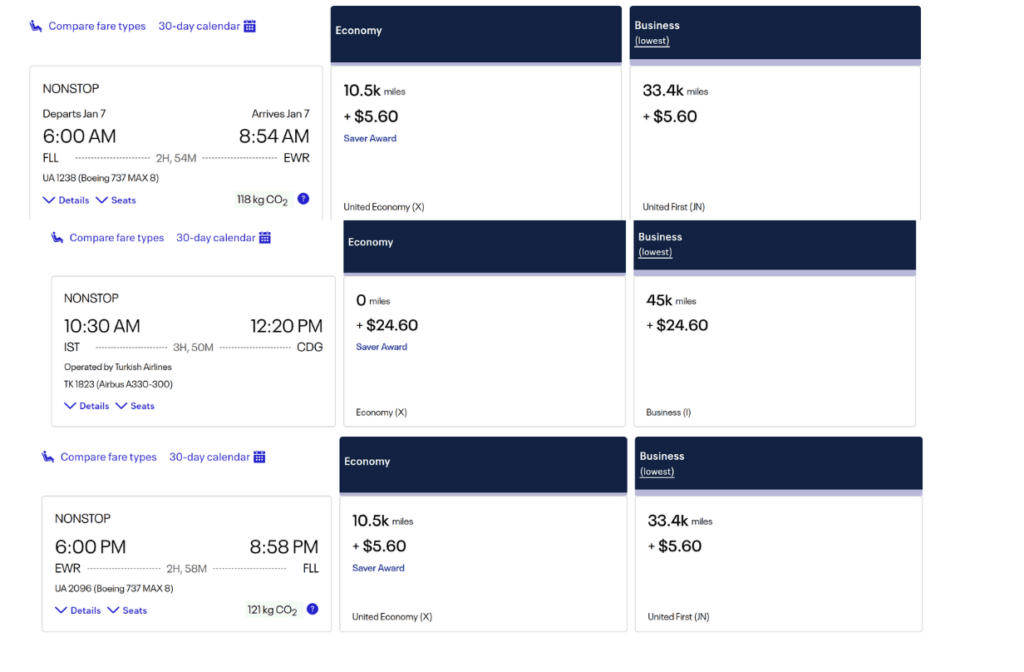
Excursionist booking:
Multi-city itinerary booking 1
Flight 1: January 5 – New York to Miami
Flight 2: January 12 – Paris to Istanbul (free flight)
Flight 3: January 25 – Miami to New York
Multi-city itinerary booking 2
Flight 1: January 6 – Miami to New York
Flight 2: January 17 – Istanbul to Paris (free flight)
Flight 3: January 24 – New York to Miami
Roundtrip booking to Paris
Flight 1: January 12 – New York to Paris
Flght 2: January 21 – Paris to New York
By booking this way, you’ve grabbed a roundtrip from Paris to Istanbul without losing any points. That saved you around 25,000 miles depending on the days you wanted to book. A roundtrip from New York to Paris is 24,000 points with Virgin Atlantic.
That’s a pretty epic deal.
There doesn’t seem to be much of a time limit on this stuff either. I tried putting a flight from New York to Miami in July, a Paris to Istanbul flight in December, and a New York to Los Angeles flight in January, and the Paris flight was still free.
Go crazy and experiment with it.
The best airlines with free stopovers: Air Canada Aeroplan
Air Canada’s Aeroplan system is an utter gem for value thanks to its generous zonal and distance-based award charts. It’s not hard to squeeze a ton of value from the system on a regular redemption, so when you throw its own 5,000-point stopover into the mix, things can get interesting.
The basics of this perk are exactly as it sounds—you can add a stopover to any award booking to almost anywhere for just 5,000 points. You’d add a stopover by booking using the multi-city option, just like on United’s page.
There are some important rules you need to follow, though:
- You’re allowed one stopover per direction of travel. So that means one stopover on a one-way flight or two with a roundtrip.
- Your stopover can’t last more than 45 days.
- You can’t use an open jaw AND a stopover. This is different from United’s perk where you can book wildly different flights with no apparent correlation.
- You can’t backtrack.
Used correctly, it’s a pretty epic benefit. I use it on a regular basis to complement my lifestyle. I often stay for a place for one month, so if I’m staying in Japan, then Mumbai, and then London for a month each, I can book a flight from Japan to London with a 5,000-point stopover in Mumbai.
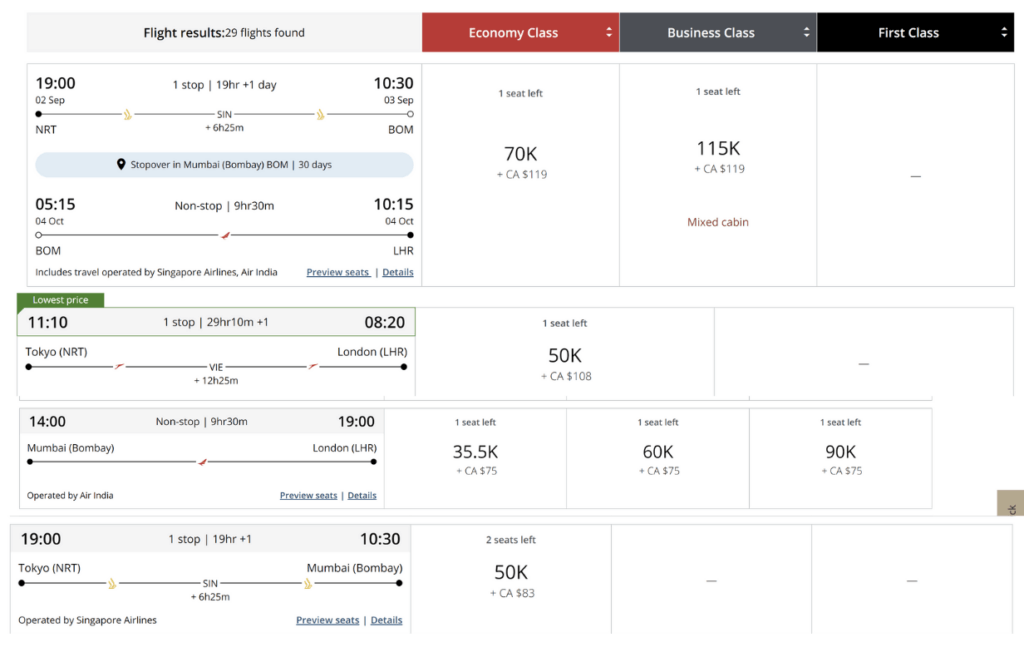
In this situation, I can book the whole thing for 70,000 points. Breaking it up into segments on the specific dates I required would have cost me around 85,000 points, so I’ve saved 15,000 points in one move.
The one major thing to consider is the Aeroplan award chart’s distance pricing. Although the stopover is only 5,000 points, if the combined distance of a flight goes beyond the threshold for the award category of the main flight, the rate will rise.
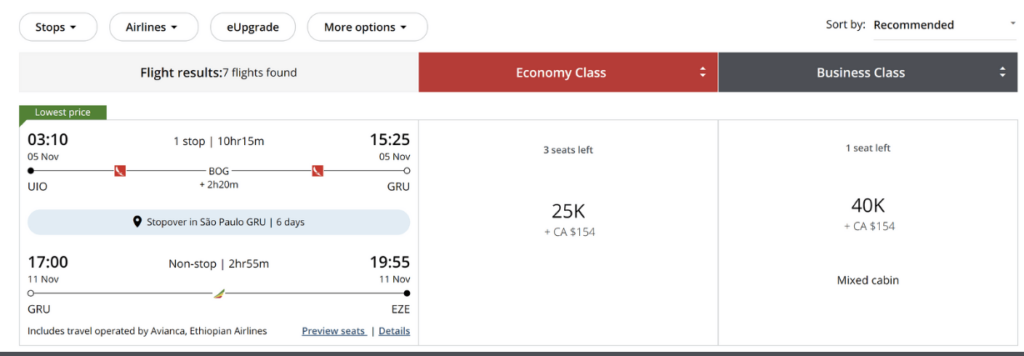
With this in mind, it’s best to keep the flights on the shorter side or maximize categories with broad ranges like South America. There are only two bands for flights in South America, with 20,000 points the most you can pay for an economy flight. So, adding an extra flight here is a strong value. In the example shown, I booked an itinerary from Quito in Ecuador to Buenos Aires, with a few days in Sao Paulo, Brazil thrown in for 5,000 points.
Be careful not to get enchanted by what seems like a great deal. Do your research to make sure an open jaw or separate bookings might be a better deal.
The best airlines with free stopovers: Alaska Airlines
Alaska’s stopover program is a generous but severely limited effort. It can go a long way for the casual traveler, as long as you’re okay with a little spontaneity.
It offers a free stopover on award bookings, but limits them to the following rules:
- You can only fly with Alaska Airlines and one other partner per booking. So if you fly with Korean Airways to somewhere in Asia, you can only use a stopover if it’s a city that Korean flies into.
- It’s almost always going to be a hub. So in the same Korean Air example, you’ll almost definitely need to do your stopover in Seoul.
- You can’t book a stopover if you’ve booked a flight within a region. I.e, if you booked an intra-Europe flight, you can’t add a stopover.
This is definitely going to be a niche option, but worth checking if you use Alaska a lot.
The best airlines with free stopovers: All Nippon Airways (ANA)
Japan’s flagship airline operates a similar stopover program to Alaska’s. There aren’t many bells and whistles beyond the usual ANA rules of having to book a roundtrip. This is only annoying because it drops some flexibility, but you can use open jaws which is a plus.
On the other hand, it does have a round-the-world ticket option. This impressive deal offers customers the chance to book multiple flights around the globe for a fraction of the typical cost. The rate is set by the total distance flown, with a 20,000-mile trip only costing 115,000 points in business class.
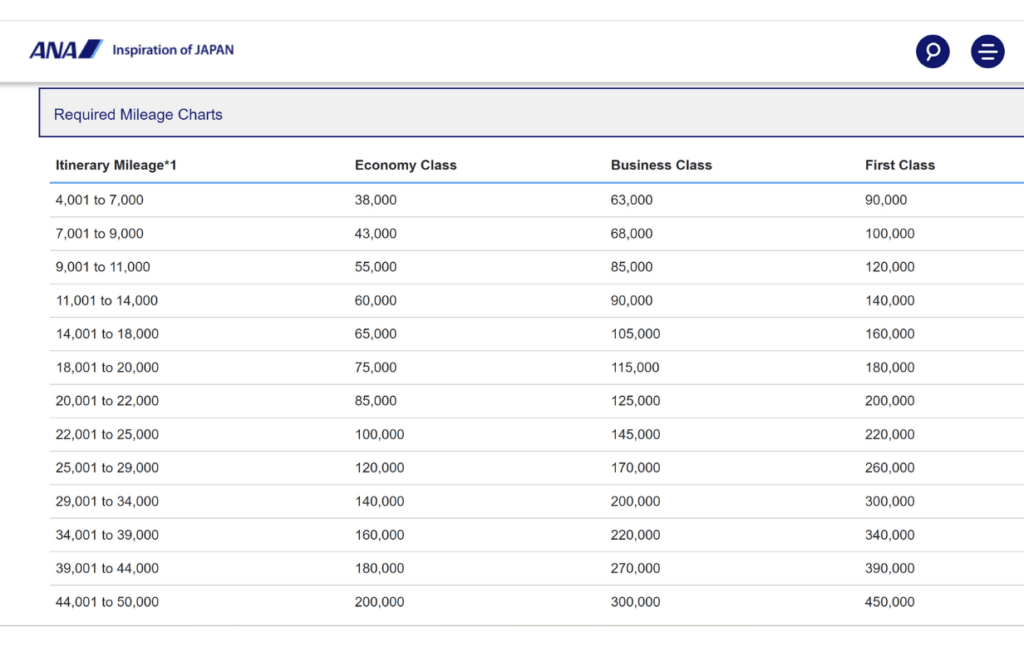
Using this program, you have the potential for eight stopovers plus a few “ground transport” legs where you can grab a train somewhere else in Europe, for example.
In theory, if you can fly the flights you could book a fully business class trip from New York, to London, to Cairo, to Dubai, to Tokyo, to Sydney, and back to New York for 170,000 points. That’s incredible if you can pull it off.
Using open jaws
To recap from earlier, an open jaw is simply an itinerary that flies into one city and departs from another. For example, you could fly from Los Angeles to Sydney, then Melbourne to Los Angeles.
There aren’t really any options on airline portals to book these—you just do it yourself using the multi-city function.
The reason for using these will depend on your situation. In some cases, it’s purely practical. Imagine you’re on a trip to the UK. You’re flying into London, then heading north to see Glasgow and Edinburgh before grabbing the ferry to Belfast and down into Ireland before finishing in Dublin. At that point, you either have to fly back to London and grab your return flight or find another way to get there.
Instead, you could book a flight from the US to London as your inbound leg, and a flight from Dublin as your outbound leg.
In this situation, the benefits are two-fold, as you’ll also skip the high fees attached to flights leaving the UK. In other situations, you might choose to save points or cash by booking the cheapest airport to fly in and out of on your trip.
Combine open jaws with some of the stopover perks above, and you could save a ton.
The point
Stopovers and open jaws are essential tools for any money-saving (and adventurous) traveler. Learning the airline’s systems can save you thousands of points by wrangling longer itineraries into compact freebies.

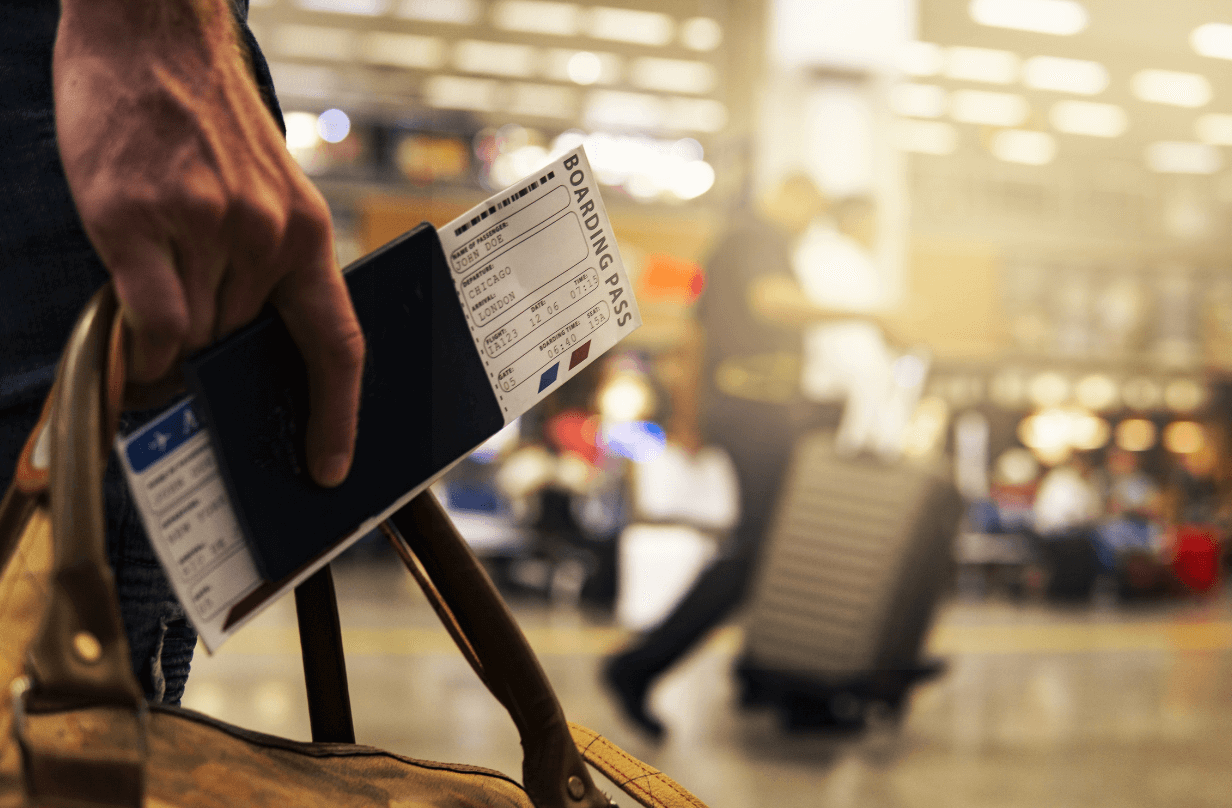







 by your friends at The Daily Navigator
by your friends at The Daily Navigator



